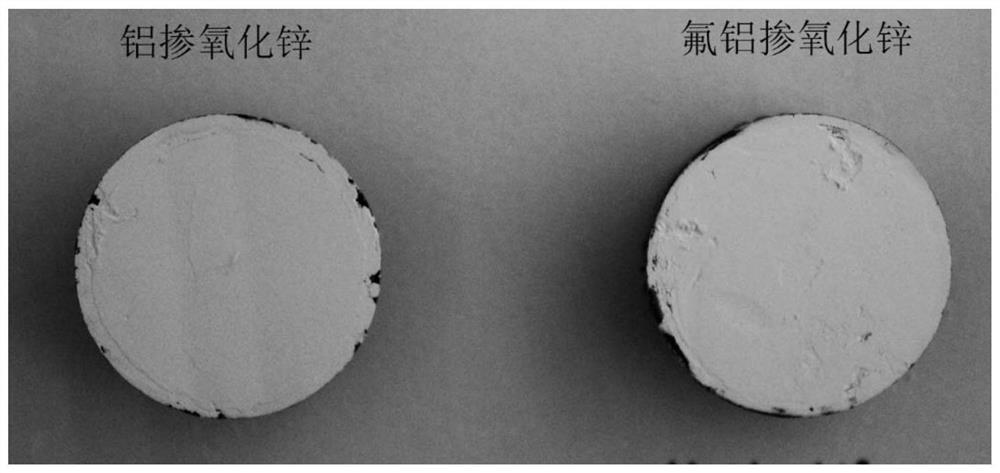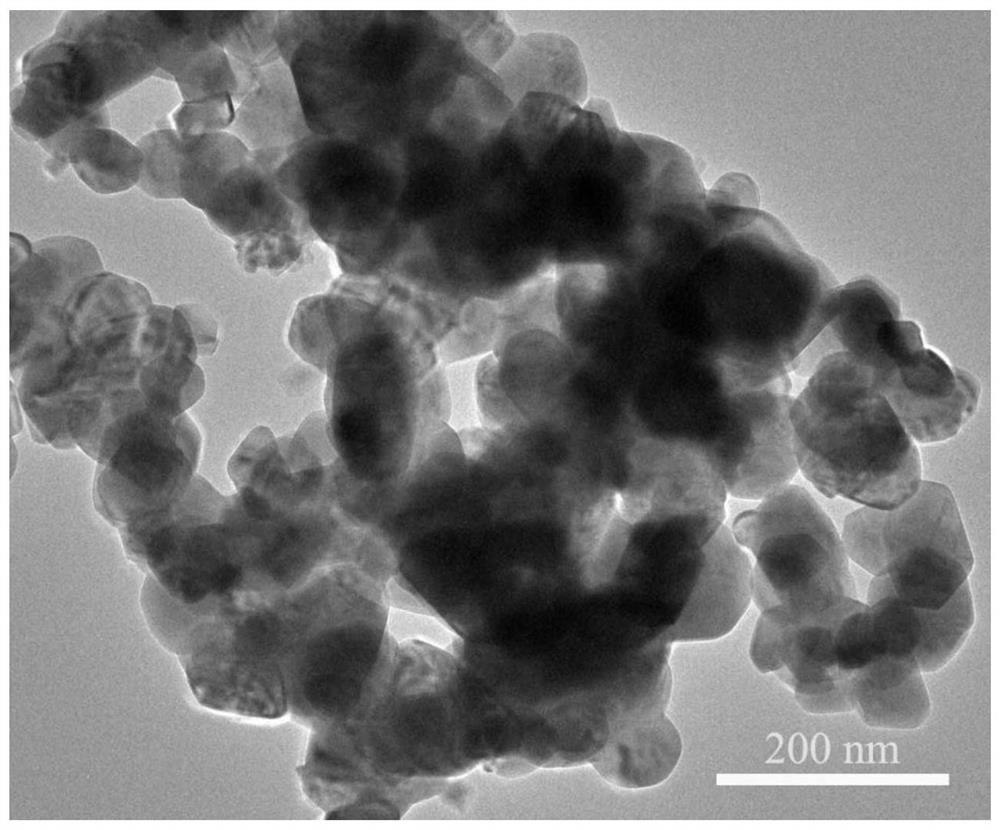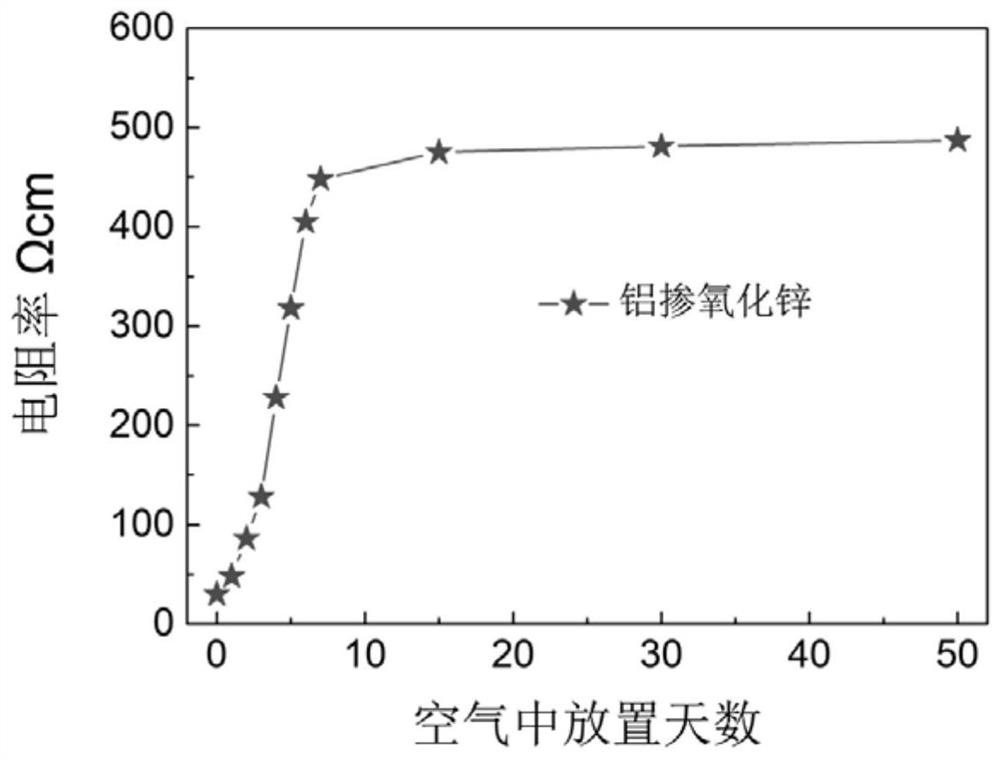Anion-cation co-doped zinc oxide conductive powder and preparation method thereof
An anion-cation and conductive powder technology, applied in the direction of zinc oxide/zinc hydroxide, conductive coatings, etc., can solve the problem that the whiteness of light-colored conductive powder doped with zinc oxide is not high enough, it is unfavorable for large-scale industrial production, and the preparation process is complicated To solve the problem of high density, achieve the effect of improving stability, reducing absorption ratio and improving whiteness
- Summary
- Abstract
- Description
- Claims
- Application Information
AI Technical Summary
Problems solved by technology
Method used
Image
Examples
Embodiment 1
[0037] 1) Accurately weigh 29.75g Zn(NO 3 ) 2 ·6H 2 O and 0.38g Al(NO 3 ) 3 9H 2 O, dissolved in 100ml deionized water, stirred for 20 minutes to form a uniform and stable solution A, weighed 20gNH 4 HCO 3 Dissolve in 100ml deionized water, stir for 20 minutes to form a uniform and stable solution B, slowly add solution B to solution A at a rate of 10ml / min, and keep stirring at a rate of 600r / min; while controlling the reaction The temperature of the solution is between 20°C and 40°C. Monitor the pH value of the reaction solution. When the pH value of the solution is close to neutral, stop adding solution B dropwise and continue stirring for 20 minutes to obtain a precipitate;
[0038] 2) The precipitate obtained from the reaction in step 1) was filtered, washed 4 times with water, and washed 2 times with ethanol (the volume ratio of the water used for washing or ethanol to the precipitate was 3:1), and then dried at 120°C for 12 hours. 0.4g of AlF with a particle size...
Embodiment 2
[0043] Accurately weigh 29.75g Zn(NO 3 ) 2 ·6H 2 O and 0.46gGa(NO 3 ) 3 9H 2 O, dissolved in 100ml deionized water, stirred for 20 minutes to form a uniform and stable solution A, weighed 20gNH 4 HCO 3Dissolve in 100ml deionized water and stir for 20 minutes to form a uniform and stable solution B. Other methods are the same as in Example 1, except that 0.4g ZnF 2 replace AlF 3 , and then mixed with the dried co-precipitated product and ball milled for 2 hours.
[0044] The whiteness of the obtained powder is 88, and the volume resistivity is 10Ωcm. After 50 days in the natural environment, the volume resistivity is 55Ωcm. When the air environment is heated to 500°C, the volume resistivity is 132Ωcm.
[0045] Comparative experiment without fluorine doping: other methods are the same as above, except that ZnF is not added during the experiment 2 Powder.
[0046] The whiteness of the obtained powder is 71, and the volume resistivity is 29Ωcm. After 50 days in the natur...
Embodiment 3
[0048] Accurately weigh 29.75g Zn(NO 3 ) 2 ·6H 2 O with 0.59g In(NO 3 ) 3 9H 2 O was dissolved in 100ml deionized water, stirred for 20 minutes to form a uniform and stable solution A, and 20g NH 4 HCO 3 Dissolve in 100ml deionized water and stir for 20 minutes to form a uniform and stable solution B. Other methods are the same as in Example 1, except that 0.4g ZnF 2 Mix with the dried co-precipitation product and ball mill for 2 hours.
[0049] The whiteness of the obtained powder is 81, and the volume resistivity is 31Ωcm. After 50 days in the natural environment, the volume resistivity is 98Ωcm. When the air environment is heated to 500°C, the volume resistivity is 180Ωcm.
[0050] Comparative experiment 3 without fluorine doping: the other methods are the same as above, except that ZnF is not added during the experiment 2 Powder.
[0051] The obtained powder has a whiteness of 65 and a volume resistivity of 136Ωcm. After being placed in the natural environment for...
PUM
| Property | Measurement | Unit |
|---|---|---|
| particle size | aaaaa | aaaaa |
| particle size | aaaaa | aaaaa |
| whiteness | aaaaa | aaaaa |
Abstract
Description
Claims
Application Information
 Login to View More
Login to View More - R&D
- Intellectual Property
- Life Sciences
- Materials
- Tech Scout
- Unparalleled Data Quality
- Higher Quality Content
- 60% Fewer Hallucinations
Browse by: Latest US Patents, China's latest patents, Technical Efficacy Thesaurus, Application Domain, Technology Topic, Popular Technical Reports.
© 2025 PatSnap. All rights reserved.Legal|Privacy policy|Modern Slavery Act Transparency Statement|Sitemap|About US| Contact US: help@patsnap.com



